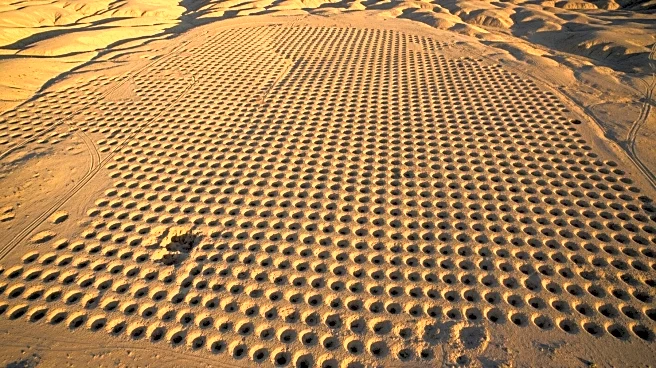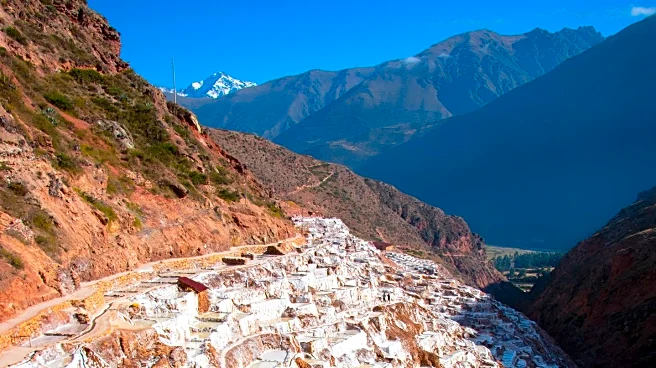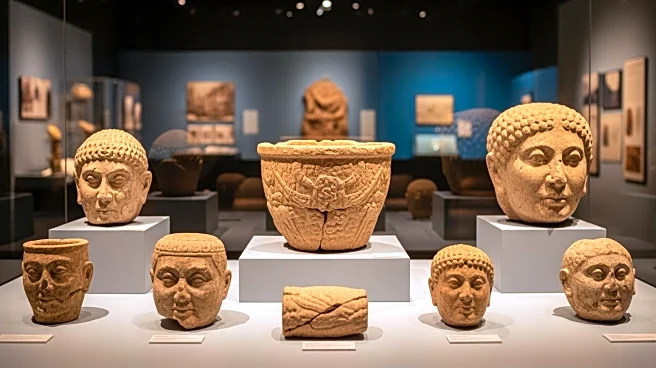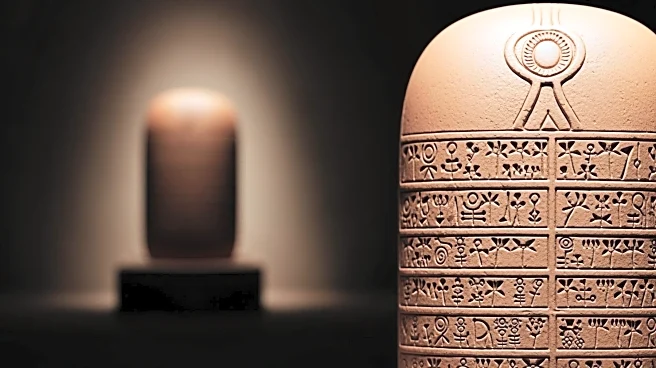What's Happening?
A new study has revealed that Peru's Band of Holes, a series of thousands of indentations in the foothills of the Andes, once functioned as a marketplace before becoming an Inca accounting site. Researchers
used drone imaging and microbotanical analyses to uncover maize and reed residues, supporting the site's use for barter and storage. The study suggests the holes' segmented arrangement is linked to quipu structures, indicating Inca tribute organization followed hierarchical decimal taxation systems. The site was built between 1000 C.E. and 1400 C.E., during the Chincha Kingdom's rule.
Why It's Important?
The study provides valuable insights into the historical and cultural significance of the Band of Holes, enhancing understanding of pre-Hispanic and Inca societies. The findings highlight the role of marketplaces and accounting systems in ancient civilizations, contributing to archaeological and historical research. The research may influence cultural heritage preservation efforts and academic discourse, impacting stakeholders in archaeology and history. The study challenges pseudo-archaeological narratives, promoting accurate representation of Indigenous knowledge.
What's Next?
Further research may explore the Band of Holes' historical significance, potentially leading to new archaeological discoveries. The study's findings may influence cultural heritage preservation efforts, promoting accurate representation of Indigenous knowledge. Stakeholders, including archaeologists and historians, may use the research to inform academic discourse and public understanding of ancient civilizations.
Beyond the Headlines
The study highlights the importance of accurate representation of Indigenous knowledge in academic and public discourse. The research underscores the cultural and historical significance of the Band of Holes, contributing to a deeper understanding of ancient societies. The findings may lead to long-term shifts in archaeological research and cultural heritage preservation, promoting accurate representation and understanding of historical sites.











